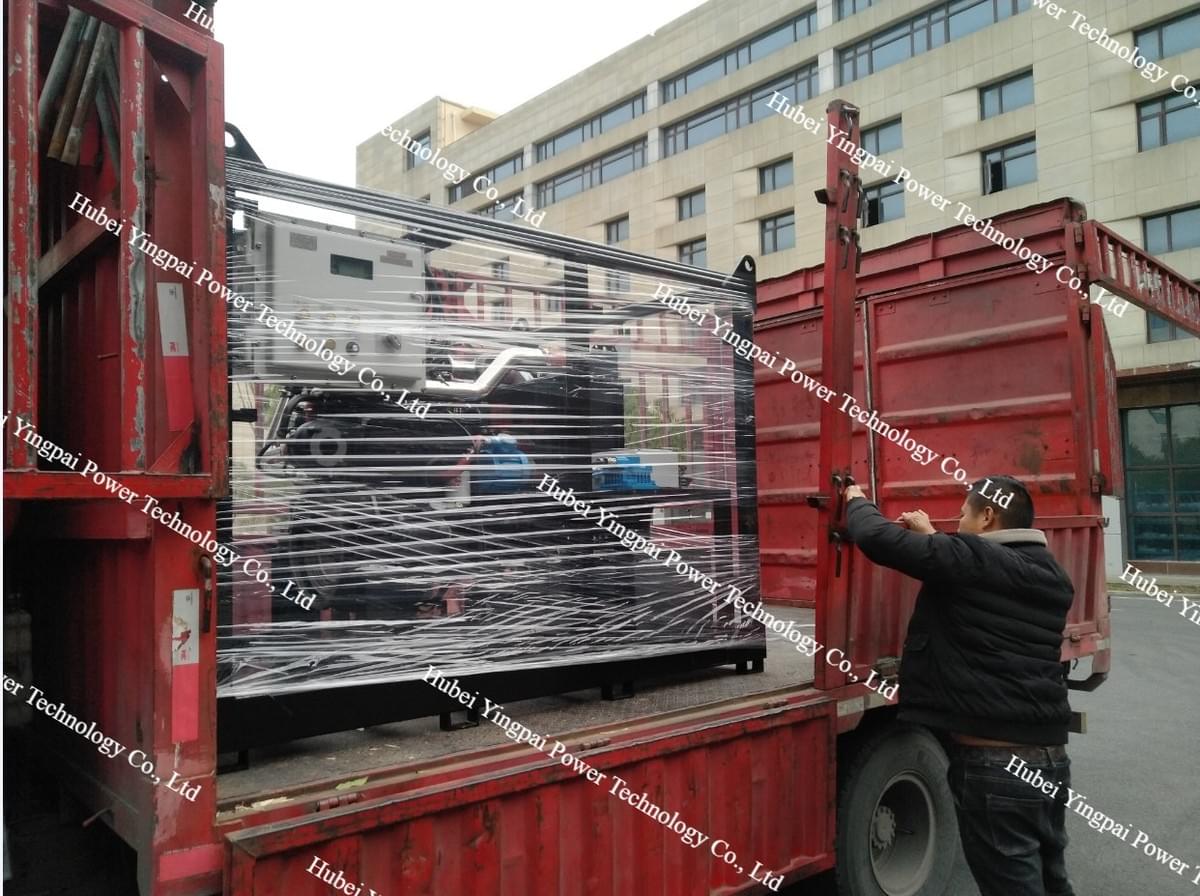A gift to customers before the Lunar New Year, the oilfield chemical industry uses explosion-proof diesel engines.
Explosion-proof principle
Eliminate or control ignition sources: Carry out special design and treatment for parts of the engine that may generate ignition sources, such as air intake system, exhaust system, and electronic control system. For example, a flame arrester is installed in the air intake system to prevent backfire from igniting combustible gas in the air; The exhaust system adopts double-layer pipe with water interlayer cooling to reduce the exhaust temperature, and a flame arrester is installed to prevent the flame from erupting.
Controlling the surface temperature: By increasing the cooling capacity of the cooling system, the surface temperature of the engine does not exceed a specified value, usually no more than 150°C, to prevent it from becoming a source of ignition.
Monitoring and protection: Explosion-proof electronic monitoring system is installed to accurately send out audible and light alarm signals when the temperature of engine parts, cooling water temperature, exhaust port temperature, speed, water level of exhaust gas treatment tank, lubricating oil pressure and other parameters exceed the set value, and can automatically or manually shut down.
Key components
Air intake system: including air filter, air intake pipe, flame arrester, air shut-off damper, intake manifold, etc. The flame arrester is made of high-temperature, corrosion-resistant materials, and the air shut-off damper can cut off the air intake and stop the emergency when the diesel engine is abnormal.
Exhaust system: mainly exhaust manifold, exhaust bellows, exhaust gas treatment device, flame arrester, exhaust pipe. Among them, the exhaust manifold and exhaust bellows are double-layer pipes, with forced closed cooling; There are two common types of waste gas treatment devices: water washing type and dry type; The flame arrester stops the flame from erupting.
Starting device: spring start, compressed air start, hydraulic pneumatic and other methods, which require smooth start within 30s at an ambient temperature of 5°C, and compressed air is commonly used.
Fuel tank: made of non-combustible materials, arranged to prevent impact and at least 50mm away from heat sources, and the capacity shall not exceed 8h of normal operating fuel consumption.
Explosion-proof electronic monitoring system: It is composed of various sensors and central control systems placed in different positions of the diesel engine to monitor the operating status of the engine in real time.
Types & Characteristics
Explosion-proof EFI diesel engine: For example, the explosion-proof EFI diesel engine produced and developed by Eagle Power Technology. can carry out explosion-proof treatment on air intake, exhaust, electronic control and other systems to meet the requirements of marine production and operation in dangerous areas, and can effectively improve the safety performance of domestic petroleum equipment in dangerous operation areas.
ATEX-certified diesel engines: Some ATEX-compliant diesel engines, such as those in the oilfield, are suitable for use in hazardous areas such as Zone 1 and Zone 2 areas. These engines are specially designed and certified to ensure safe operation in environments where combustible gases or vapors are present.
Maintenance & Maintenance
Regular inspection: Conduct regular inspections on the air intake system, exhaust system, cooling system, fuel system, etc., to ensure the normal operation of each component, such as checking whether the flame arrester is blocked, whether the cooling system is leaking, whether the fuel tank is leaking, etc.
Clean parts: Clean air filters, exhaust gas treatment devices and other parts in time to prevent the accumulation of impurities from affecting engine performance and explosion-proof effects.
Replacement of wearing parts: Replace spark plugs, filters, seals and other wearing parts regularly according to the recommendations of the engine manufacturer to ensure the reliability and explosion-proof performance of the engine.
Professional maintenance: Repair and maintenance work is carried out by professionally trained technicians to ensure that the explosion-proof requirements are followed during the maintenance process and the explosion-proof structure and performance of the engine are not damaged.


